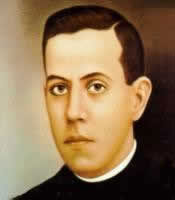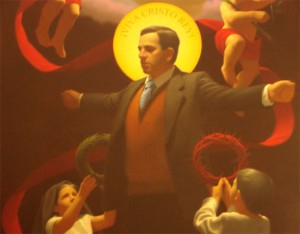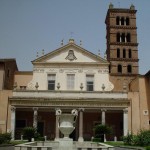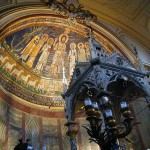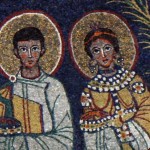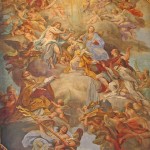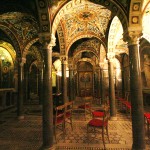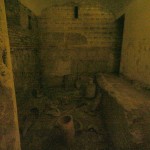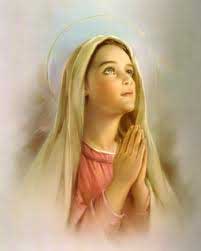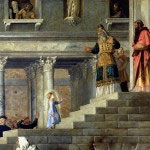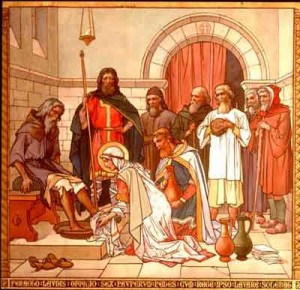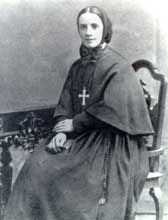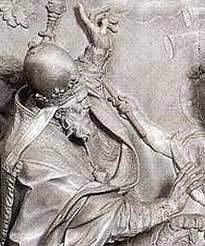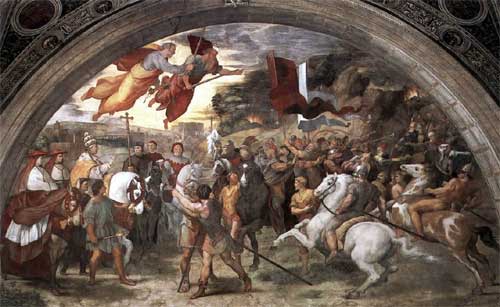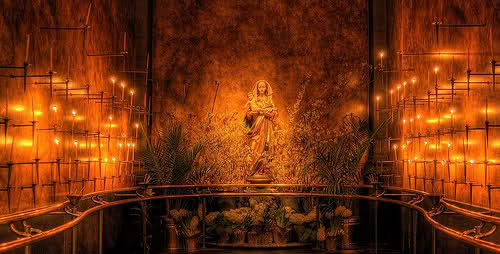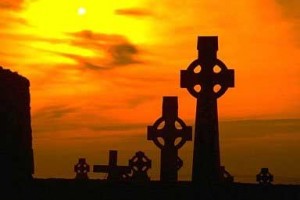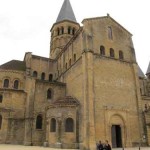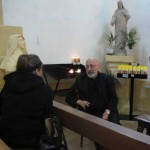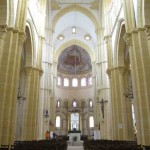Viva Cristo Rey
take a look…you won’t be disappointed
and maybe moved to learn about this extradodinary man…saint
According to one of Fr. Pro’s biographers, Rec. M.D. Forrest, M.S.C., the following was composed shortly before his death:
Does our life become from day to day more painful, more oppressive, more replete with afflictions? Â Blessed be He a thousand times who desires it so. If life be harder, love makes it also stronger, and only this love, grounded on suffering, can carry the Cross of my Lord Jesus Christ. Love without egotism, without relying on self, but enkindling in the depth of the heart an ardent thirst to love and suffer for all those around us: a thirst that neither misfortune nor contempt can extinguish… I believe, O Lord; but strengthen my faith… Heart of Jesus, I love Thee; but increase my love. Heart of Jesus, I trust in Thee; but give greater vigor to my confidence. Heart of Jesus, I give my heart to Thee; but so enclose it in Thee that it may never be separated from Thee. Heart of Jesus, I am all Thine; but take care of my promise so that I may be able to put it in practice even unto the complete sacrifice of my life.
Tags: Blessed Miguel Agust, Blessed Miguel Pro, catholic, catholic podcast, catholic prayer, cathollc spirituality, heart, Heart of Jesus, Jesus, Lord Jesus Christ, love, M.D. Forrest, martyr
This entry was posted on Wednesday, November 23rd, 2011 at 12:03 am
You can follow any responses to this entry through the RSS 2.0 feed.
St. Cecilia, her story is an extraordinary one of faithulness and commitment. Some would have you believe it was all “legend”, but the discovery of her incorrupt body in 1599 would bear otherwise. It seems to me the Lord is encouraging us to believe the witness of this courageous virgin martyr.
In St. Cecilia’s in Rome, Â I had one of the most peaceful and prayerful experiences while on pilgrimage to the “City of the Saints”.
It is said that Saint Cecilia was born of a patrician family in Rome and raised as a Christian. She wore a coarse horsehair garment beneath her clothes of rank, fasted, and vowed herself to God.
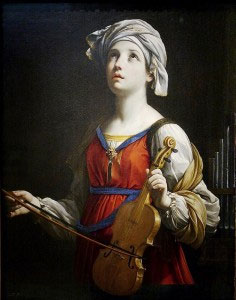 Against her will she was married by her father to a young, pagan patrician named Valerian. While everyone sang and danced at their wedding, Cecilia sat apart, saying only the Psalms. Valerian turned out to be a man of great understanding. On their wedding night, she told Valerian, “I have an angel of God watching over me. If you touch me in the way of marriage, he will be angry and you will suffer. But if you respect my maidenhood, he will love you as he loves me.”
Against her will she was married by her father to a young, pagan patrician named Valerian. While everyone sang and danced at their wedding, Cecilia sat apart, saying only the Psalms. Valerian turned out to be a man of great understanding. On their wedding night, she told Valerian, “I have an angel of God watching over me. If you touch me in the way of marriage, he will be angry and you will suffer. But if you respect my maidenhood, he will love you as he loves me.”
Valerian replied, “Show me this angel.” She told him that if he believed in the living and one true God and was baptized, he would see the angel. Thus, she persuaded Valerian to respect her vow of virginity.
He was impressed and attracted by his wife’s Christian graces, and so Valerian was baptized by Pope Saint Urban (which would be c. 222-230). When he returned to Cecilia, he found her standing by the side of an angel as she promised. The angel told him: “I have a crown of flowers for each of you. They have been sent from paradise as a sign of the life you are both to lead. If you are faithful to God, He will reward you with the everlasting perfumes of heaven.”
The angel then crowned Cecilia with roses, and Valerian with a wreath of lilies. The delightful fragrance of the flowers filled the whole house. At this point Valerian’s brother, Tiburtius, appeared. He, too, was offered salvation if he would renounce false gods. Cecilia converted him, and he was baptized.
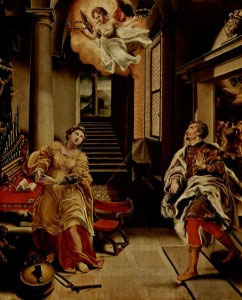 From that time the two young men dedicated themselves to good works. Because of their ardor in burying the bodies of martyred Christians, they were arrested. The prefect Almachius told them that if they would sacrifice to the gods, they could go free. They refused, and Valerian rejoiced when he was handed over to be scourged.
From that time the two young men dedicated themselves to good works. Because of their ardor in burying the bodies of martyred Christians, they were arrested. The prefect Almachius told them that if they would sacrifice to the gods, they could go free. They refused, and Valerian rejoiced when he was handed over to be scourged.
The prefect wanted to give them another chance, but his assessor warned him that they would simply use the interim to give away their possessions so that they couldn’t be confiscated. They were beheaded in Pagus Triopius, four miles from Rome. With them was an officer named Maximus, who had declared himself a Christian after witnessing their fortitude.
Cecilia buried the three and then decided to turn her home into a place of worship. Her religion was discovered and she herself asked to refute her faith. She converted those who were sent to convince her to sacrifice to the gods. When Pope Urban visited her at home, he baptized over 400 people.
In court, Almachius debated with her for some time. She was sentenced to be suffocated to death in the bathroom of her own house. The furnace was fed seven times its normal amount of fuel, but the steam and heat failed to stifle her. 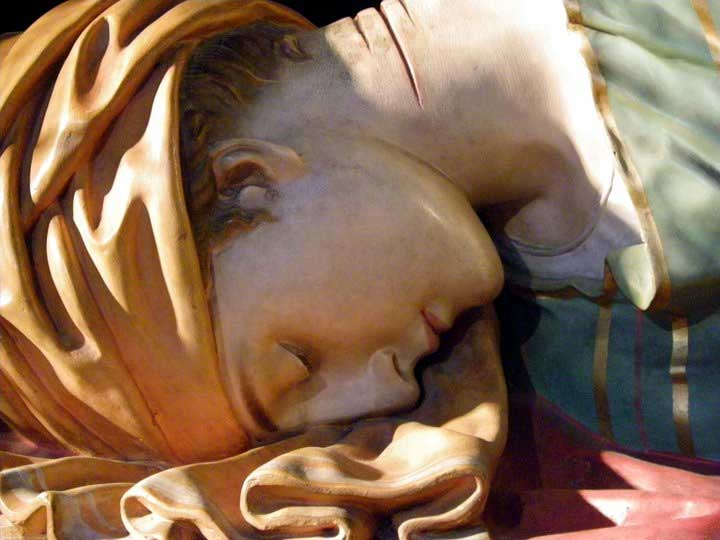 A soldier sent to behead her struck at her neck three times, and she was left dying on the floor. She lingered for three days, during which time the Christians thronged to her side, and she formally made over her house to Urban and committed her household to his care.
A soldier sent to behead her struck at her neck three times, and she was left dying on the floor. She lingered for three days, during which time the Christians thronged to her side, and she formally made over her house to Urban and committed her household to his care.
She was buried next to the papal crypt in the catacombs of Saint Callixtus. In 817, Pope Saint Paschal I discovered her grave, which had been concealed 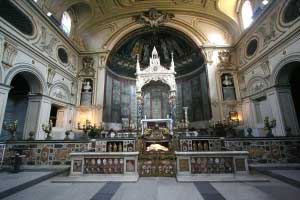 from the Lombard invader Aistulf in 756, and translated her body to beneath the main altar of what was later called the titulus Sanctae Caeciliae, which translates as “the church founded by a lady named Cecilia.” In 1599, during the renovation of the church, Cardinal Sfondrati opened her tomb and found her holy remains incorrupt. Even the green and gold of her rich robe had not been injured by time. Thousands had the privilege of seeing her in her coffin, and many have been blessed by miracles. The body disintegrated quickly after meeting with the air.
from the Lombard invader Aistulf in 756, and translated her body to beneath the main altar of what was later called the titulus Sanctae Caeciliae, which translates as “the church founded by a lady named Cecilia.” In 1599, during the renovation of the church, Cardinal Sfondrati opened her tomb and found her holy remains incorrupt. Even the green and gold of her rich robe had not been injured by time. Thousands had the privilege of seeing her in her coffin, and many have been blessed by miracles. The body disintegrated quickly after meeting with the air.
Under the high altar in Saint Cecilia’s Church is a beautiful marble statue by Maderna portraying the “martyr” bathed in her own blood as she fell after the stroke of the 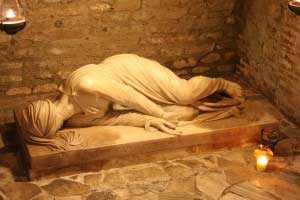 sword. A replica of this statue occupies the the original resting place of the saint in the catacomb of Callixtus. Other artists were allowed to paint pictures of her after her tomb was opened.
sword. A replica of this statue occupies the the original resting place of the saint in the catacomb of Callixtus. Other artists were allowed to paint pictures of her after her tomb was opened.
Until the middle ages, Pope Saint Gregory had been the patron of music and musicians, but when the Roman Academy of Music was established in 1584, it was put under the protection of Saint Cecilia; thus, her patronage of music originated. Dryden wrote a “Song for Saint Cecilia Day” and Pope an “Ode for Music on Saint Cecilia Day.”
Valerian, Tiburtius, and Maximus are historical characters; they were Roman martyrs, buried in the cemetery of Praetextatus, but nothing else is known of them. Her story was the basis for the Second Nun’s Tale in Chaucer’s Canterbury Tales.
St. Cecilia is regarded as the patroness of music [because of the story that she heard heavenly music in her heart when she was married], and is represented in art with an organ or organ-pipes in her hand.– From The Lives of the Saints by the Rev. S. Baring-Gould, M.A., published in 1914 in Edinburgh.
Dear Saint Cecilia, one thing we know for certain about you is that you became a heroic martyr in fidelity to your divine Bridegroom.
We do not know that you were a musician but we are told that you heard Angels sing.
Inspire musicians to gladden the hearts of people by filling the air with God’s gift of music and reminding them of the divine Musician who created all beauty.
Amen.
Tags: angel, catholic, catholic podcast, catholic prayer, cathollc spirituality, churches in rome, martyr, music, prayer, rome, st cecilia, valerian, virgin martyr, virginity
This entry was posted on Tuesday, November 22nd, 2011 at 12:32 am
You can follow any responses to this entry through the RSS 2.0 feed.
I love this feast day of the Blessed Virgin Mary!!!
The Presentation of the Blessed Virgin Mary (as it is known in the West), or The Entry of the Most Holy Theotokos into the Temple (its name in the East), is a liturgical feast celebrated by the Roman Catholic and Orthodox Churches.
wiki - The feast is associated with an event recounted not in the New Testament, but in the apocryphal
Infancy Narrative of James. According to that text, Mary’s parents, Joachim and Anne, who had been childless, received a heavenly message that they would bear a child. In thanksgiving for the gift of their daughter, they brought her, when still a child, to the Temple in Jerusalem to consecrate her to God. Mary remained in the Temple until puberty, at which point she was assigned to Joseph as guardian. Later versions of the story (such as the Gospel of Pseudo-Matthew and the Gospel of the Nativity of Mary) tell us that Mary was taken to the Temple at around the age of three in fulfillment of a vow.
The feast originated as a result of the dedication of the Basilica of Saint Mary the New, built in the year 543 by the Byzantines under Emperor Justinian I near the site of the ruined Temple in Jerusalem. Although this
basilica was destroyed by the Sassanid Persians under Khosrau II after the Siege of Jerusalem (614), the feast continued to be celebrated throughout the East. The feast was celebrated in the monasteries of Southern Italy by the ninth century and was later introduced into the Papal Chapel in Avignon in the year 1372 by a decree of Pope Gregory XI. Â It was included in the Roman Missal in 1472. But, as the fact of the “Presentation of the Blessed Virgin Mary” is only a pious belief, but not a defined matter of faith, it was suppressed by Pope Pius V in 1568. Â As a result, it did not appear in the Tridentine Calendar. Pope Sixtus V reintroduced it into the Roman Calendar in 1585. Pope Clement VIII made this feast a Greater Double in 1597. The
feast also continued as a memorial in the Roman Calendar of 1969.
Entry of the Most Holy Theotokos into the Temple (Russian icon, 16th century).The Eastern Orthodox Church celebrates it as one of its twelve Great Feasts on November 21 (for those churches which follow the Julian Calendar, November 21 falls on December 4 of the modern Gregorian Calendar). The first documented celebration of the feast in any calendar is the mention of the Εἴσοδος τῆς Παναγίας Θεοτόκου (Entry of the All-Holy Theotokos – i.e. into the Temple) in the 11th-century Menology of the Eastern Roman (also known as Byzantine) emperor Basil II. In the Orthodox Church the feast always falls during the Nativity Fast, and on the day of the feast the fasting rules are lessened somewhat so that fish, wine and oil may be eaten.
For the Roman Catholic Church, on the day of the Presentation of the Blessed Virgin Mary, “we celebrate that dedication of herself which Mary made to God from her very childhood under the inspiration of the Holy Spirit who filled her with grace at her Immaculate Conception.”
November 21 is also a “Pro Orantibus” Day, a day of prayer for cloistered religious “totally dedicated to God in prayer, silence and concealment.”
The Presentation in art
Western depictions usually focused on the lone figure of the young Mary climbing the steep steps of the Temple, having left her parents at the bottom, and climbing towards the Chief Priest and other Temple figures at the top of the steps. The Presentation was one of the usual scenes in larger cycles of the Life of the Virgin, although it was not usually one of the scenes shown in a Book of hours. – wiki
Collect: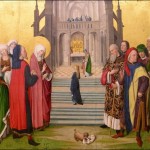
Eternal Father,
we honor the holiness and glory of the Virgin Mary.
May her prayers bring us
the fullness of your life and love.
We ask this through our Lord Jesus Christ, your Son, who
lives and reigns with You and the Holy Spirit,
one God, for ever and ever. Amen.
First Reading: Zechariah 2:14-17 (2:10-13 RSV)
Sing and rejoice, O daughter of Zion; for lo, I come and I will dwell in the midst of you, says the Lord. And many nations shall join themselves to the Lord in that day, and shall be My people; and I will dwell in the midst of you, and you shall know that the Lord of hosts has sent Me to you. And the Lord will inherit Judah as His portion in the holy land, and will again choose Jerusalem.”
Be silent, all flesh, before the Lord; for He has roused Himself from His holy dwelling.
Gospel Reading: Matthew 12:46-50
While He was still speaking to the people, behold, His mother and His brethren stood outside, asking to speak to Him. But He replied to the man who told Him, “Who is My mother, and who are My brethren?” And stretching out His hand toward His disciples, He said, “Here are My mother and My brethren! For whoever does the will of My Father in heaven is My brother, and sister, and mother.”
Tags: blessed virgin mary, catholic, catholic podcast, catholic prayer, cathollc spirituality, holy spirit, Holy Theotokos, prayer, presentation of the blessed virgin mary, Roman Catholic, silence, The Presentation of the Blessed Virgin Mary
This entry was posted on Monday, November 21st, 2011 at 12:07 am
You can follow any responses to this entry through the RSS 2.0 feed.
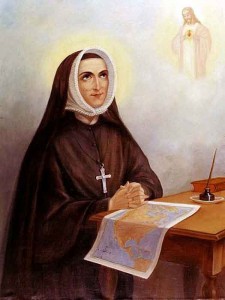  I’m not 100% comfortable with Father’s connection in the video above with St. Rose and failure…my gosh, she survived the French Revolution, traveled to a foreign and scary wilderness land, had difficulty learning English (which is a REALLY tough language to learn compared to the romance languages), and yet she persevered in educating and establishing a legacy of education which survives today…failure? I don’t think so, but you decide….
 I’m not 100% comfortable with Father’s connection in the video above with St. Rose and failure…my gosh, she survived the French Revolution, traveled to a foreign and scary wilderness land, had difficulty learning English (which is a REALLY tough language to learn compared to the romance languages), and yet she persevered in educating and establishing a legacy of education which survives today…failure? I don’t think so, but you decide….
Vatican.va -ROSE PHILIPPINE DUCHESNE Was born August 29, 1769 in Grenoble, France. She was baptized in the Church of St. Louis and received the name of Philip, the apostle, and Rose of Lima, first saint of the new continent. She was educated at the Convent of the Visitation of Ste. Marie d’en Haut, then, drawn to the contemplative life, she became a novice there when she was 18 years old.
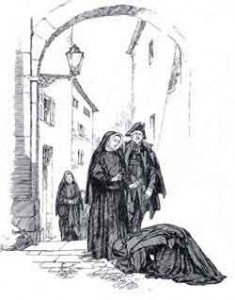 At the time of the Revolution in France, the community was dispersed and Philippine returned to her family home, spending her time nursing prisoners and helping others who suffered. After the Concordat of 1801, she tried with some companions to reconstruct the monastery of Ste. Marie but without success.
At the time of the Revolution in France, the community was dispersed and Philippine returned to her family home, spending her time nursing prisoners and helping others who suffered. After the Concordat of 1801, she tried with some companions to reconstruct the monastery of Ste. Marie but without success.
In 1804, Philippine learned of a new congregation, the Society of the Sacred Heart of Jesus, and offered herself and the monastery to the Foundress, Mother Madeleine Sophie Barat. Mother Barat visited Ste. Marie in 1804 and received Philippine and several companions as novices in the Society.
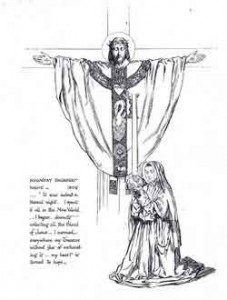 Even as Philippine’s desire deepened for the contemplative life, so too her call to the missions became more urgent – a call she had heard since her youth. In a letter she wrote to Mother Barat, she confided a spiritual experience she had had during a night of adoration before the Eucharist on Holy Thursday: “I spent the entire night in the new World … carrying the Blessed Sacrament to all parts of the land … I had all my sacrifices to offer: a mother, sisters, family, my mountain! When you say to me ‘now I send you’, I will respond quickly ‘I go”‘. She waited, however, another 12 years.
Even as Philippine’s desire deepened for the contemplative life, so too her call to the missions became more urgent – a call she had heard since her youth. In a letter she wrote to Mother Barat, she confided a spiritual experience she had had during a night of adoration before the Eucharist on Holy Thursday: “I spent the entire night in the new World … carrying the Blessed Sacrament to all parts of the land … I had all my sacrifices to offer: a mother, sisters, family, my mountain! When you say to me ‘now I send you’, I will respond quickly ‘I go”‘. She waited, however, another 12 years.
In 1818 Philippine’s dream was realized. She was sent to respond to the bishop of the Louisiana territory, who was looking for a congregation of educators to help him evangelize the Indian and French children of his diocese. At St. Charles, near St. Louis, Missouri, she founded the first house of the Society outside France. It was in a log cabin – and with it came all the austerities of frontier life: extreme cold, hard work, lack of funds. She also had difficulty learning English. Communication at best was slow; news often did not arrive from her beloved France. She struggled to remain closely united with the Society in France. (more…)
Tags: catholic, catholic podcast, catholic prayer, cathollc spirituality, french revolution, philippine duchesne, society of the sacred heart
This entry was posted on Friday, November 18th, 2011 at 12:06 am
You can follow any responses to this entry through the RSS 2.0 feed.
.
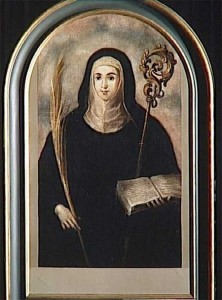 see also Pope Benedict’s teachings on St. Gertrude on the Discerning Hearts Holy Women page
see also Pope Benedict’s teachings on St. Gertrude on the Discerning Hearts Holy Women page
(1256-1302 A.D.) Few men have merited the title, “the Great”; fewer women. I know of only one nun so honored, St. Gertrude of Helfta, a mystic whose spiritual writings have remained influential up to the present.
Nothing is known of this German woman’s family background. When five years old, she was entrusted to the sisters of Helfta Abbey to be educated. From a very young age she gave evidence of her brilliance and quickly outstripped her companions. In her teen years she asked to join the community. Therefore, she probably spent her whole life from childhood on within the abbey walls.
Her love for secular studies made the common life wearisome, pride and vanity ate away at her soul and she soon became an unhappy young woman until Christ appeared to her. The day was branded in her memory, it was in her 26th year, when as she says “in a happy hour, at the beginning of twilight, thou O God of truth, more radiant than any light, yet deeper than any secret thing, determined to dissolve the obscurity of my darkness.” From then on her biographer tells us “she became a theologian instead of a grammarian.” She did not give up her intellectual ardor but now, all her labors were for her sisters, to cure what she termed “the wound of ignorance”. Her many gifts and mystical graces did not prevent her from giving herself wholeheartedly to the common life with its joys and sorrows. In fact many of her special graces came to her as she took part in the ordinary routine of convent life. She felt keenly for those whose burdens involved them in distracting duties, for example those responsible for meeting the debts of the monastery.
She prayed that they might have more time to pray and fewer distractions. The Lord’s answered “It does not matter to me whether you perform spiritual exercises or manual labor, provided only that your will is directed to me with a right intention. If I took pleasure only in your spiritual exercises, I should certainly have reformed human nature after Adam’s fall so that it would not need food, clothing or the other things that man must find or make with such effort.”
Many of her writings are lost, but fortunately she left to the world an abundance of spiritual joy in her book The Herald of Divine Love, in which she tells of the visions granted her by our divine Lord. She wrote this excellent, small book because she was told that nothing was given to her for her own sake only. Her Exercises is an excellent treatise on the renewal of baptismal vows, spiritual conversion, religious vows, love, praise, gratitude to God, reparation, and preparation for death.
She began to record her supernatural and mystical experiences in what eventually became her Book of Extraordinary Grace (Revelation of Saint Gertrude), together with Mechtilde’s mystical experiences Liber Specialis Gratiae, which Gertrude recorded. Most of the book was actually written by others based on Gertrude’s notes. She also wrote with or for Saint Mechtilde a series of prayers that became very popular, and through her writings helped spread devotion to the Sacred Heart (though it was not so called until revealed to St. Margaret Mary Alocoque).
Gertrude is inseparably associated with the devotion to the Sacred Heart. The pierced hear
t of Jesus embodied for her the Divine Love, an inexhaustible fountain of redemptive life. Her visions and insights in connection with the Heart of Jesus are very enlightening. In one such intellectual vision, she perceived the unceasing love of Christ for us in two pulsations of his Heart – one accomplished the conversion of sinners, the other the sanctification of the just. Just as our own faithful heart keeps right on whether we advert to it or not, these pulsations will endure till the end of time despite the vicissitudes of history.
Our Lord wishes people to pray for the souls in purgatory. He once showed Gertrude a table of gold on which were many costly pearls. The pearls were prayers for the holy souls. At the same time the saint had a vision of souls freed from suffering and ascending in the form of bright sparks to heaven.
In one Vision, Our Lord tells Gertrude that he longs for someone to ask Him to release souls from purgatory, just as a king who imprisons a friend for justice’s sake hopes that someone will beg for mercy for his friend. Jesus ends with:
“I accept with highest pleasure what is offered to Me for the poor souls, for I long inexpressibly to have near Me those for whom I paid so great a price. By the prayers of thy loving soul, I am induced to free a prisoner from purgatory as often as thou dost move thy tongue to utter a word of prayer.” (more…)
Tags: benedictine, catholic, catholic podcast, catholic prayer, cathollc spirituality, devotion, family, jesus christ, love, mystic of the Church, mystical experiences, sacred heart, sacred heart of jesus, spiritual exercises, spiritual writings, st gertrude, women of the middle ages
This entry was posted on Wednesday, November 16th, 2011 at 2:30 am
You can follow any responses to this entry through the RSS 2.0 feed.
A Queen of Scotland!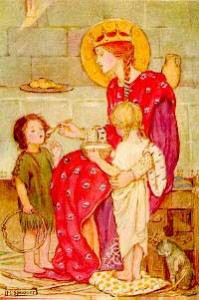
Margaret was born c. 1045 and was the niece of King Edward the Confessor of England. She was raised in Hungary and lived with her exiled father, Edward Atheling, her mother, Agatha, her brother, Edgar, and her sister, Christian. They returned to England in 1054. Early chronicles tell us that she read the scriptures in Latin, learned French and was trained in English needlework.
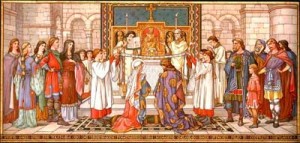 Marriage of St Margaret
Marriage of St MargaretMargaret married Malcolm III ‘Canmore’ of Scotland in c.1070. Margaret would have been about 24 years of age and Malcolm about 47. Ancient chronicles tell us that Margaret was more prepared for the cloister than the crown. However, Malcolm won her over and they were married in Dunfermline, then the seat of the Scottish kings.
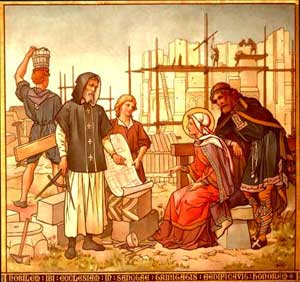
Margaret had a significant influence on early Scotland. Although she was a patron of the existing celtic church, she also introduced to Scotland the Benedictines from Canterbury and had the Priory Church built which would eventually become Dunfermline Abbey. Margaret also had a chapel built at Edinburgh Castle and the church at Iona rebuilt after Viking attacks.
Washing the feet of the poor
Margaret was very pious and carried out many works of charity. She visited and cared for the sick and had hostels built for the poor. It was her custom that the poor should visit her every morning and be seated around her to receive alms. (more…)
Tags: benedictine, catholic, catholic podcast, catholic prayer, cathollc spirituality, celtic church, england, Malcolm III, mother, scotland, st margaret, St Margaret Margaret, St. Margaret of Scotland, women of the middle ages
This entry was posted on Wednesday, November 16th, 2011 at 12:04 am
You can follow any responses to this entry through the RSS 2.0 feed.
Mother Frances Xavier Cabrini: America’s Patron Saint of Immigrants
As debates rage nationally and locally over immigrant’s rights, we are well served to remember that – ultimately and with very few exceptions – all Americans are immigrants in one form or another. At the Statue of Liberty’s pedestal, the American ideal is reflected eloquently in a poem by Emma Lazarus that begins: “Give me your tired, your poor, your huddled masses yearning to breathe free…” Ideology and dialogue alone, however,
provide little visible relief to immigrants. Help often comes from individuals, and for many Italian immigrants in late 19th America, this support came from Saint Frances Xavier Cabrini.
Widely recognized as the first American citizen canonized by the Roman Catholic Church, she is also acknowledged as the Patron Saint of immigrants. She gave hope to those desperately seeking help, offering assistance in both their material and spiritual needs.
Born Maria Francesca Cabrini on July 15, 1850, she was the tenth child of Agostino Cabrini and Stella Oldini. Her difficult birth, premature by two months, affected her health throughout her life. Many of siblings, however, would not survive adolescence. Her father farmed as her mother tended to the children in Sant’Angelo Lodigiano, a small village sited on the plains of Lombardy south of Milan.
Maria’s life found its direction early. Nightly, her father read to the family, often recounting stories of great Catholic missionaries. Especially appealing for Maria were the tales of Chinese missions, and she hoped to become a Franciscan missionary. At the age of 13, she enrolled as a boarding student in the Normal School located in the commune of Arluno. Graduating in 1868 and certified as a teacher, she remained in Arluno, living in the convent with the religious sisters who ran the school.
In 1877, at the age of 27, she was able to take religious vows and became the Mother Superior of the House of Providence orphanage in another Lombardian commune, Codogno. In a tribute to the evangelizing Jesuit, Frances Xavier, Maria added Xavier to her name. Within three years, she helped establish a new order, the Missionary Sisters of the Sacred Heart. The order helped to create homes, a school and a nursery, and their good works became known to the Bishop of Piacenza, Giovanni Scalabrini.
By the late 19th century, thousands of Italians had arrived in the United States, with many making New York City their home. They suffered tremendous hardships in their new country. Viewed contemptuously by most Americans, Italians labored in the most menial of jobs. Even the Roman Catholic Church in America was unprepared for their arrival and initially treated the many devout Italians as outsiders. The prayers of the immigrants, however, were soon answered in the form of Mother Frances Xavier Cabrini. Urged by Bishop Scalabrini, and with the blessing and support of Pope Leo XIII, she and six of her Missionary Sisters landed in New York in early 1889.
Unable to speak English and lacking a place to stay, she and her fellow Sisters endured many of the same problems suffered by immigrants.Obstacles, however, failed to diminish her spirit and within a short time she established an orphanage and school. Her primary donor was the wife of the director of the Metropolitan Museum of Art, Countess Mary Cesnola. This was only the beginning, however, for during her lifetime Mother Cabrini founded sixty-seven institutions around the world including schools, orphanages, hospitals, and social service outreach programs. (more…)
Tags: catholic, catholic podcast, catholic prayer, cathollc spirituality, italian immigrants, mother frances xavier cabrini, patron saint of emigrants, saint frances xavier cabrini
This entry was posted on Sunday, November 13th, 2011 at 7:20 am
You can follow any responses to this entry through the RSS 2.0 feed.
Born in 321 AD, in what is modern day France, St Martin began his life journey as a pagan, converted to Christianity, ascended through church ranks to become Bishop of Tours and ultimately achieved sainthood.
Martin was forced into the army by his father at age 15. But he disliked military life, and led a monk-like existence as an officer, as he wanted to become a Christian, then a new religion in his land.
One severe winter’s day, army officer Martin saw a poor man at the city gates of Amiens, shivering with cold and begging for food. Having no money, Martin took off his warm woolen cloak, cut it in half with his sword and gave half to the beggar. That night Martin dreamt of Christ surrounded by angels, and wearing the half-cloak Martin had given the beggar, and He said, “See, this is the cloak in which Martin, the heathen, has covered me”.
Shortly after Martin was baptized a Christian. Because of that, and because he’d already spent five long years fighting invaders from Germany, he asked for his release from the army. “Up to now, I have served you as a soldier; let me now serve Christ”.
Free to pursue a new life as a disciple of St Hilary of Poitiers, Martin’s path was to remain challenged. He developed a community of disciples, abstaining from worldly comforts and riches. In 371 AD, the city of Tours wanted him as their bishop. A small pocket of opposition said he was not refined enough. But clergy and majority rule prevailed over such criticism, and Martin as consecrated as bishop. At first he ruled a pagan diocese. But with each year, his increasingly far-flung congregation grew through his visits by boat, donkey and on foot.When he died, aged eighty, on November 9 401 AD, Martin’s body was carried by boat to Tours for burial. It is said the boat moved without oars or sail, accompanied by the sound of heavenly music, and that trees along the river, bare and ready for winter, burst into blossom at his passing.
Prayer to Continue to Fight for God
Lord, if your people still have need of my services, I will not avoid the toil. Your will be done. I have fought the good fight long enough. Yet if you bid me continue to hold the battle line in defense of your camp, I will never beg to be excused from failing strength. I will do the work you entrust to me. While you command, I will fight beneath your banner.   Amen
~~by St Martin of Tours
Tags: army officer, catholic, catholic podcast, catholic prayer, cathollc spirituality, france st, hilary of poitiers, military life
This entry was posted on Friday, November 11th, 2011 at 12:59 am
You can follow any responses to this entry through the RSS 2.0 feed.
No one, however weak, is denied a share in the victory of the cross.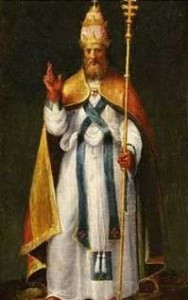
No one is beyond the help of the prayer of Christ.
– St. Leo the Great
How do you stop a barbarian invader like Attila from sacking your town? Pray, pray, pray…just ask St. Leo the Great.
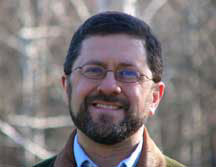 Take a listen to Mike Aquilina (the “great” son of the Fathers) talk about St. Leo the Great:
Take a listen to Mike Aquilina (the “great” son of the Fathers) talk about St. Leo the Great:
[powerpress]
CNA –Pope Leo the Great is the first Pope whose sermons and letters, many of which were on faith and charity, were preserved in extensive collections. He served as pontiff from 440 until his death in 461. His writing on the Incarnation was acclaimed at the Council of Chalcedon in 451. –
Prior to his pontificate, Leo was a deacon and active as a peacemaker in the Roman Empire. He is most remembered for having successfully persuaded Attila the Hun not to plunder Rome. He was not as successful during
another attack three years later, however. Nevertheless, he managed to save the city from being burnt. He stayed on to help the people rebuild Rome.
He was made a Doctor of the Church in 1754-CNA
This is the chapel/altar area with the tomb of St. Leo in St. Peter’s in Rome. It was restricted to the public for some reason. But I was able to get close, because I went to confession in that area (a very interesting story I’ll share some day).
 Here is the “great” painting by Raphael that is in the Vatican Museum of St. Leo imploring Attilia to back off and change his ways (and he did, go figure)
Spiritual Writings –
 - Sermons
-Â Letters
Tags: catholic, catholic podcast, catholic prayer, cathollc spirituality, council of chalcedon, doctor of the church, fathers mike, pope leo, st leo, vatican museum
This entry was posted on Thursday, November 10th, 2011 at 12:10 am
You can follow any responses to this entry through the RSS 2.0 feed.
Memorare
Remember, O most gracious Virgin Mary, that never was it known that anyone who fled to Your protection, implored Your help, or sought Your intercession was left unaided. Inspired with this confidence, I fly unto You, O virgin of virgins, my Mother. To You I come, before You I stand, sinful and sorrowful. O Mother of the Word Incarnate, despise not my petitions, but in Your mercy, hear and answer me.
Amen
Tags: catholic, catholic podcast, catholic prayer, cathollc spirituality, Holy Mary, virgin mary, virgins, Word Incarnate
This entry was posted on Saturday, November 5th, 2011 at 7:20 am
You can follow any responses to this entry through the RSS 2.0 feed.
OK, First…Purgatory, it’s a good thing. While no one knows exactly (though various mystics have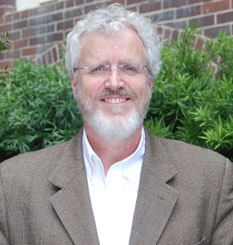 attempted to convey what they experienced by way of their prayer) what will happen there, we do know that if we end up in Purgatory we should be extremely happy since we are most definitely headed for heaven. No one in Purgatory is sent to hell (Yeah!).
attempted to convey what they experienced by way of their prayer) what will happen there, we do know that if we end up in Purgatory we should be extremely happy since we are most definitely headed for heaven. No one in Purgatory is sent to hell (Yeah!).
[powerpress]
First Stop in this exploration is to listen to Deacon James Keating of Institute for Priestly Foramtion with one of the best discussions Bruce and I ever had on the Poor Souls and Purgatory.
So what about praying for the Dead and what does the Church say about the Poor Souls?
What is Purgatory?
The Catechism of the Catholic Church defines Purgatory as follows:
1031 The Church gives the name Purgatory to this final purification of the elect, which is entirely different from the punishment of the damned. The Church formulated her doctrine of faith on Purgatory especially at the Councils of Florence and Trent. The tradition of the Church, by reference to certain texts of Scripture, speaks of a cleansing fire: As for certain lesser faults, we must believe that, before the Final Judgment, there is a purifying fire. He who is truth says that whoever utters blasphemy against the Holy Spirit will be pardoned neither in this age nor in the age to come. From this sentence we understand that certain offenses can be forgiven in this age, but certain others in the age to come (St. Gregory the Great, Dial. 4,39:PL 77,396; cf. Mt 12:31)..
.
.A “final purification” , hmm, sounds like suffering to me, The kind of interior suffering where we have to deal with the painful results of sin inflicted on us by others, but we also with the pain we have inflicted on others…and boy does that hurt. But in this “final purification” (it means just that…final) final healing occurs…an eternal, forever and forever amen, type of healing so we can be  “happy with God forever in Heaven” (to paraphrase the Baltimore Catechism).
The gift of this life here and now on earth is that we can enter into that “purification” now, so that when that moment comes (which we call…death), we can go right to the “pearly gates” and to heaven 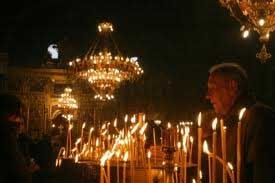 OR we can go to Purgatory to get cleaned up for the beatific vision. St. Teresa of Avila exhorts us to (to paraphrase again) “DO IT NOW, DON’T WAIT”. OK, here are accurate quotes:
OR we can go to Purgatory to get cleaned up for the beatific vision. St. Teresa of Avila exhorts us to (to paraphrase again) “DO IT NOW, DON’T WAIT”. OK, here are accurate quotes:
FROM HOLY SCRIPTURE
There are clear references to Purgatory in both the the Old and the New Testaments. In the Old Testament in 2 Machabees X11 43,46 the Jewish practice of praying for the dead is clearly set out it the following words – ‘It is therefore a holy and wholesome thought to pray for the dead that they may he loosed from their sins.
In the New Testament Our Blessed Lord in Matthew V 26 refers to the prison from which no one is released before his debts are repaid to the last farthing. St. Paul in Cor. 1,3 15 mentions that there are souls who can only be saved ‘yet so as by fire’. It is also stated in Apocalypse XXI, 27 in reference to heaven – ‘There shall in no way enter into it anything defiled”. St. Augustine says that these words clearly indicate that there must be forgiveness of some sins in the world to come, which cannot be in heaven as nothing defiled shall enter therein. Therefore Our Blessed Lord is clearly referring to a place which is neither heaven nor hell and which we call Purgatory.
The learned Protestant, Dr. Jeremy Taylor, writes thus about this matter. ‘We find by the history of the Machabees, that the Jews did pray and make offerings for the dead which appears by other testimonies, and by their form of prayer, still extant, which they used in the captivity. Now it is very considerable that since Our Blessed Saviour did reprove all the evil doctrines of the Scribes and Pharisees, and did argue concerning the dead and the resurrection, yet he spoke no word against this 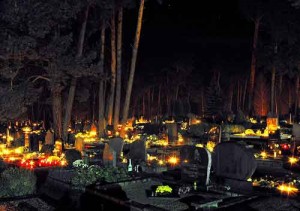 public practice but left it as he found it which he who came to declare to us all the will of His Father, would not have done, if it had not been innocent, pious and full of charity. The practice of it was at first, and was universal; it being plain in TertulIian and St. Cyprian.”
public practice but left it as he found it which he who came to declare to us all the will of His Father, would not have done, if it had not been innocent, pious and full of charity. The practice of it was at first, and was universal; it being plain in TertulIian and St. Cyprian.”
FROM THE FATHERS OF THE CHURCH
“We pray for all among us who are departed believing that this will be the greatest relief for them while the holy and tremendous victim lies present ” – St. Cyril Of Jerusalem
“We make yearly offerings for the dead” – Tertullian
“….. by long punishment for sin to be cleansed a long time by fire and to have purges away all sin by suffering” – St. Cyprian.
‘That you purify me in this life and render me such that 1 may not stand in need of that purging fire” – St. Augustine.
‘No day shall pass you over in silence, no prayer of mine shall ever be closed without remembering you. No night shall pass you over without some vows of my supplications. You shall have share in all my sacrifices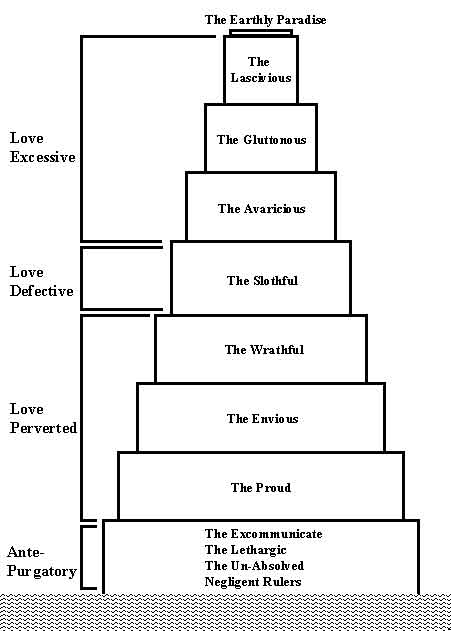 . If I forget you (now that you are dead) let my own right hand be forgotten” – St. Ambrose.
. If I forget you (now that you are dead) let my own right hand be forgotten” – St. Ambrose.
St. Chrysostom in his eighth homily on the Phillipians says that to pray for the faithful departed in the Mass was decreed by the Apostles themselves.
St. Clement of Alexandria says that by punishment after death men must expiate every least sin before they can enter heaven.
Origen in many places and Lactantius teach at large that all souls are purged by the punishment of fire before they enter heaven unless they are so pure as not to stand in need of it.
St. Epiphanius, St. Ephrem, St. Athanasius, Eusebius, St. Paulinus all teach the same.
FROM THE GREAT SAINTS
“No tongue can express, no mind can understand, how dreadful is Purgatory…And be assured that the souls have to pay what they owe even to the last farthing. This is God’s decree to satisfy the demands of justice” –St. Catherine of Genoa.
“Purgatory fire will be more intolerable than all the torments that can be felt or conceived in this life” – Venerable Bede.
“A person may say, I am not much concerned how long I remain in Purgatory, provided I may come to eternal life. Let no one reason thus. Purgatory fire will more dreadful than whatever torment can be seen, imagined or endured in this world.” – St. Caesarius of Arles.
‘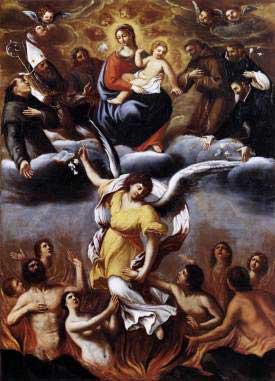 The same fire torments the damned in hell and the just in Purgatory. The least pain in Purgatory exceeds the greatest in this life.” – St. Thomas Aquinas.
The same fire torments the damned in hell and the just in Purgatory. The least pain in Purgatory exceeds the greatest in this life.” – St. Thomas Aquinas.
“My God, what soul would be sufficiently just to enter heaven without passing through the avenging flames’ – St. Teresa of Avila.
‘If we were thoroughly convinced of the torments of Purgatory, could we then so easily forget our parents……. if God would permit them to show themselves we would we would see them cast themselves down at our feet “My children”, they would cry out, “have mercy on us! Oh, do not forsake us!’. – St. John Vianney.
FROM PRIVATE REVELATION
“When I was praying before the Blessed Sacrament on the Feast of Corpus Christi a person enveloped in fire suddenly stood before me. From the pitiable state the soul was in I knew it was in Purgatory and I wept bitterly” – St. Margaret Mary Alacoque.
At FATIMA in 1917 Our Blessed Lady appeared to three children – Lucy, Jacinta and Francesco. The series of appearances by Our Lady to these three children is approved by the Church. Shortly before they took place a young girl from the village had died. She was about fourteen years old. The children asked Our Blessed Mother whether or not she had been saved. The Blessed Virgin advised them that indeed she had been saved but that she would be in Purgatory until the end of the world. (As a result of this revelation many prayers were offered up for her soul and we can only pray that because of this her souls has now been released into eternal glory). From this most authoritative account we can learn three things:
(i) the reality of Purgatory
(ii) great length of time many souls have to stay there
(iii) the tremendous importance of praying for the souls of the departed
Here's some more places you can go if you are still having trouble....
![]() The Burning Truth about Purgatory
The Burning Truth about Purgatory
![]() How to Explain Purgatory to Protestants (James Akin)
How to Explain Purgatory to Protestants (James Akin)
![]() The Roots of Purgatory
The Roots of Purgatory
![]() Purgatory
Purgatory
Tags: baltimore catechism, catechism of the catholic church, catholic, catholic podcast, catholic prayer, cathollc spirituality, Church, Deacon James Keating, doctrine of faith, First Stop, heaven, mystics, poor souls, prayer, purgatory
This entry was posted on Wednesday, November 2nd, 2011 at 12:45 am
You can follow any responses to this entry through the RSS 2.0 feed.
During his Angelus on Tuesday, Pope Benedict said “the Feast of All Saints is a good time to lift our gaze from the realities of the world… to the enormity of God, who encompasses all eternity and holiness. “
He said holiness is the vocation of all the baptized, and all the people of God are called to be saints.
The Pope then turned his thoughts to Wednesday’s commemoration of All Souls
[powerpress = “Vatican Radio”]
“From the early days of the Christian faith,†he said, “the Church on earth, recognizing the communion of the whole mystical body of Jesus Christ, has with great respect honored the memory of the dead and offered prayers for them.â€The Pope said “our prayers for the dead are not only useful, but necessary.â€
The Holy Father reminded the faithful to keep the bonds of affection with our loved ones who have died, not only through prayer, but also through actions like visiting cemeteries.
He said this reminds us all that we are meant for another life after death.
see more on the website for Vatican Radio
Tags: all saints, catholic, catholic podcast, catholic prayer, cathollc spirituality, pope benedict xvi, prayer, purgatory, vatican radio
This entry was posted on Tuesday, November 1st, 2011 at 2:42 pm
You can follow any responses to this entry through the RSS 2.0 feed.
Matthew and Margaret Bunson did an incredible job of chronicling all those holy men and women who were brought 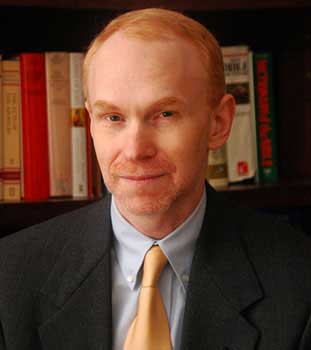 forward by our late great Holy Father, Pope John Paul II. The only thing that even comes close to reading this great book is hearing Dr. Matthew Bunson talk about those tremendous Blesseds and Saints. “John Paul II’s Book of Saints” is truly a treasury of sanctity!
forward by our late great Holy Father, Pope John Paul II. The only thing that even comes close to reading this great book is hearing Dr. Matthew Bunson talk about those tremendous Blesseds and Saints. “John Paul II’s Book of Saints” is truly a treasury of sanctity!
[powerpress]
He was known as the saint-making Pope, and he reinvigorated the world’s devotion to saints. John Paul II, himself a candidate for sainthood, left a treasury of ideals and hope for the future in these “examples of courage and coherence.” He offered us these real lives lived in extraordinary ways as ones to identify with, aspire to, and ask for intercession.
Tags: catholic, catholic podcast, catholic prayer, cathollc spirituality
This entry was posted on Tuesday, November 1st, 2011 at 10:22 am
You can follow any responses to this entry through the RSS 2.0 feed.
From Paray le Monial, France, I had the chance to catch up with Msgr. John Esseff at the First Sacred Heart World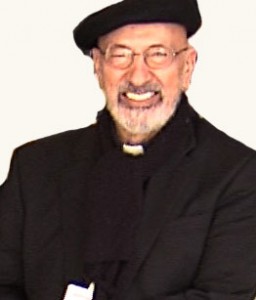 Congress.  Msgr. Esseff is one of the founders of the Sacred Heart Apostolate, sponsor of this event which brought laity, religious, and priests from around the world.  Talks where given by Cardinal Raymond Burke, Bishop Robert Herman, Christendom College President Timothy O’Donnell, and EWTN show host and author Fr. Mitch Pacwa, as well as many others  Why did they come to this small French community nestled in Eastern France?  Because our Lord choice this place and two very remarkably humble saints to communicate the message of his Sacred Heart.  He said to St. Margaret Mary:
Congress.  Msgr. Esseff is one of the founders of the Sacred Heart Apostolate, sponsor of this event which brought laity, religious, and priests from around the world.  Talks where given by Cardinal Raymond Burke, Bishop Robert Herman, Christendom College President Timothy O’Donnell, and EWTN show host and author Fr. Mitch Pacwa, as well as many others  Why did they come to this small French community nestled in Eastern France?  Because our Lord choice this place and two very remarkably humble saints to communicate the message of his Sacred Heart.  He said to St. Margaret Mary:
[powerpress]
 “My divine Heart is so inflamed with love for mankind … that it can no longer contain within itself the flames of its burning charity and must spread them abroad by your means.” She described that His Heart was on fire and surrounded by a crown of thorns. Our Lord told her that the flames
represented His love for humanity, and the thorns represented man’s sinfulness and ingratitude. Jesus informed her that her mission was to establish the devotion to His Most Sacred Heart, and He revealed twelve promises that He would bestow upon all those who practice the devotion.
She had three more visions over the next year and a half in which Jesus instructed her in a devotion that was to become known as the Nine Fridays. Christ also inspired Margaret Mary to establish the Holy Hour and to receive Holy Communion on the first Friday of every month. In the final revelation, the Lord asked that a feast of reparation be instituted for the Friday after the octave of Corpus Christi.
Blessed Claude de la Colombiere, a holy and experienced Jesuit, arrived as confessor to the nuns, and in him Margaret Mary recognized the understanding guide that had been promised to her in the visions. He became convinced that her experiences were genuine and adopted the teaching of the Sacred Heart that the visions had communicated to her.
Msgr. Esseff talks about that message, what it means for us today, and how we can live it out.
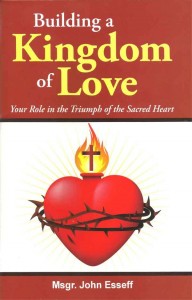 Â Visit Msgr. Esseff’s website here
 Visit Msgr. Esseff’s website here
Tags: catholic, catholic podcast, catholic prayer, cathollc spirituality, msgr. john esseff, sacred heart, sacred heart apostolate, sacred heart of jesus
This entry was posted on Monday, October 31st, 2011 at 8:54 am
You can follow any responses to this entry through the RSS 2.0 feed.
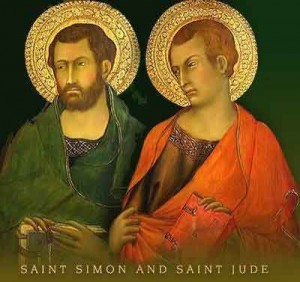 Why is this feast day of the two apostles celebrated together…Simon the Zealot and Jude, patron of the impossible? Through Jesus, with Jesus, in Jesus, all things are possible!
Why is this feast day of the two apostles celebrated together…Simon the Zealot and Jude, patron of the impossible? Through Jesus, with Jesus, in Jesus, all things are possible!
Tags: catholic, catholic podcast, catholic prayer, cathollc spirituality, Jesus, st. jude
This entry was posted on Friday, October 28th, 2011 at 7:16 am
You can follow any responses to this entry through the RSS 2.0 feed.

